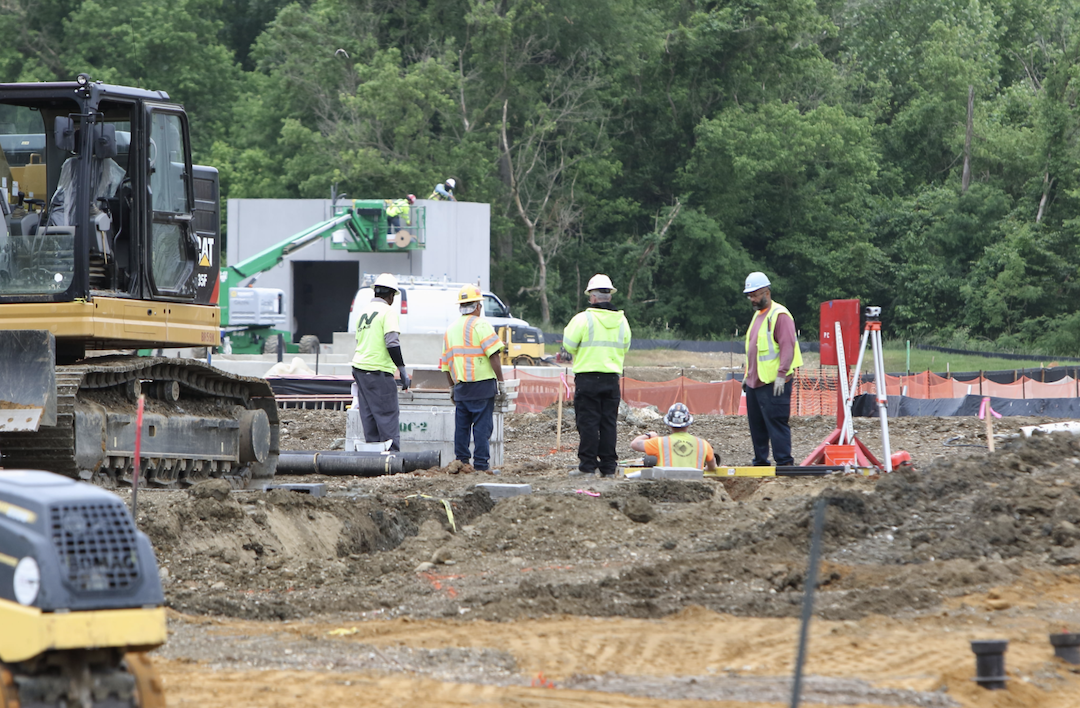Only 18 states and the District of Columbia have added construction jobs since just before the start of the pandemic in February 2020 despite a pickup in most states from October to November, according to a new analysis of federal employment data released today by the Associated General Contractors of America. Association officials said one reason employment is below pre-pandemic levels in many parts of the country is the lack of available workers to hire.
“Construction activity has picked up in recent months but still has not reached the employment levels of early last year in most of the country during what has become a very tight labor market,” said Ken Simonson, the association’s chief economist. “If contractors had found enough qualified workers, more states would have recovered fully by now from the pandemic-induced job losses,” he added, noting that job openings at the end of October exceeded the number of workers hired into the industry that month.
From February 2020—the month before the pandemic caused projects to be halted or canceled—to last month, construction employment decreased in 32 states and increased in only 18 states and D.C. Texas shed the most construction jobs over the period (-42,600 jobs or -5.5%), followed by New York (-39,700 jobs, -9.7%), California (-23,100 jobs, -2.5%), and Louisiana (19,800 jobs, -14.5%). The largest percentage losses were in Louisiana, Wyoming (-13.1%, -3,000 jobs), and New York.
Florida added the most construction jobs since February 2020 (8,700 jobs, 1.55), followed by Utah (8,200 jobs, 7.25), and Washington (6,200 jobs, 2.8%). The largest percentage gains were in South Dakota (10.5%, 2,500 jobs), followed by Idaho (8.7%, 4,800 jobs), and Utah.
From October to November construction employment decreased in 13 states, increased in 36 states and D.C., and was unchanged in Kansas. Louisiana lost the most jobs (-2,200 jobs, -1.8%), followed by North Carolina (-1,900 jobs, -0.8%) and New Jersey (-1,800 jobs, -1.2%). Louisiana also had largest percentage decline, followed by Oklahoma (-1.5%, -1,200 jobs), New Jersey, and North Carolina.
Florida added the most construction jobs between October and November (8,200 jobs, 1.4%), followed by Illinois (3,800 jobs, 1.7%) and Texas (3,600 jobs, 0.5%). Montana had the largest percentage gain (2.7%, 800 jobs), followed by Missouri (2.6%, 3,200 jobs) and Vermont (2.1%, 300 jobs).
Association officials said labor shortages are undermining the construction industry’s ability to fully recover. They urged public officials to boost investments in career and technical education and other programs that expose more people to construction career opportunities. They added that the association was working with its chapters and member firms to recruit more, and more diverse, people into the industry.
“It is time to stop giving students the incorrect impression that every good career requires a college degree and takes place in an office of one kind or another,” said Stephen E. Sandherr, the association’s chief executive officer.
View state February 2020-November 2021 data and rankings, 1-month rankings.
Related Stories
Market Data | Sep 22, 2016
Architecture Billings Index slips, overall outlook remains positive
Business conditions are slumping in the Northeast.
Market Data | Sep 20, 2016
Backlog skyrockets for largest firms during second quarter, but falls to 8.5 months overall
While a handful of commercial construction segments continue to be associated with expanding volumes, for the most part, the average contractor is no longer getting busier, says ABC Chief Economist Anirban Basu.
Designers | Sep 13, 2016
5 trends propelling a new era of food halls
Food halls have not only become an economical solution for restauranteurs and chefs experiencing skyrocketing retail prices and rents in large cities, but they also tap into our increased interest in gourmet locally sourced food, writes Gensler's Toshi Kasai.
Building Team | Sep 6, 2016
Letting your resource take center stage: A guide to thoughtful site selection for interpretive centers
Thoughtful site selection is never about one factor, but rather a confluence of several components that ultimately present trade-offs for the owner.
Market Data | Sep 2, 2016
Nonresidential spending inches lower in July while June data is upwardly revised to eight-year record
Nonresidential construction spending has been suppressed over the last year or so with the primary factor being the lack of momentum in public spending.
Industry Research | Sep 1, 2016
CannonDesign releases infographic to better help universities obtain more R&D funding
CannonDesign releases infographic to better help universities obtain more R&D funding.
Industry Research | Aug 25, 2016
Building bonds: The role of 'trusted advisor' is earned not acquired
A trusted advisor acts as a guiding partner over the full course of a professional relationship.
Multifamily Housing | Aug 17, 2016
A new research platform launches for a data-deprived multifamily sector
The list of leading developers, owners, and property managers that are funding the NMHC Research Foundation speaks to the information gap it hopes to fill.
Hotel Facilities | Aug 17, 2016
Hotel construction continues to flourish in major cities
But concerns about overbuilding persist.
Market Data | Aug 16, 2016
Leading economists predict construction industry growth through 2017
The Chief Economists for ABC, AIA, and NAHB all see the construction industry continuing to expand over the next year and a half.

















